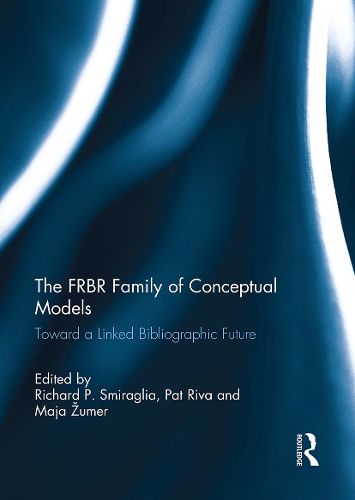Readings Newsletter
Become a Readings Member to make your shopping experience even easier.
Sign in or sign up for free!
You’re not far away from qualifying for FREE standard shipping within Australia
You’ve qualified for FREE standard shipping within Australia
The cart is loading…






Since 1998 when FRBR (Functional Requirements for Bibliographic Records) was first published by IFLA, the effort to develop and apply FRBR has been extended in many innovative and experimental directions. Papers in this volume explain and expand upon the extended family of FRBR models including Functional Requirements for Authority Data (FRAD), Functional Requirements for Subject Authority Data (FRSAD), and the object-oriented version of FRBR known as FRBRoo. Readers will learn about dialogues between the FRBR Family and other modeling technologies, specific implementations and extensions of FRBR in retrieval systems, catalog codes employing FRBR, a wide variety of research that uses the FRBR model, and approaches to using FRBR for the Semantic Web.
Librarians of all stripes as well as library and information science students and researchers can use this volume to bring their knowledge of the FRBR model and its implementation up to date.
This book was published as a special issue of Cataloging & Classification Quarterly.
$9.00 standard shipping within Australia
FREE standard shipping within Australia for orders over $100.00
Express & International shipping calculated at checkout
Since 1998 when FRBR (Functional Requirements for Bibliographic Records) was first published by IFLA, the effort to develop and apply FRBR has been extended in many innovative and experimental directions. Papers in this volume explain and expand upon the extended family of FRBR models including Functional Requirements for Authority Data (FRAD), Functional Requirements for Subject Authority Data (FRSAD), and the object-oriented version of FRBR known as FRBRoo. Readers will learn about dialogues between the FRBR Family and other modeling technologies, specific implementations and extensions of FRBR in retrieval systems, catalog codes employing FRBR, a wide variety of research that uses the FRBR model, and approaches to using FRBR for the Semantic Web.
Librarians of all stripes as well as library and information science students and researchers can use this volume to bring their knowledge of the FRBR model and its implementation up to date.
This book was published as a special issue of Cataloging & Classification Quarterly.